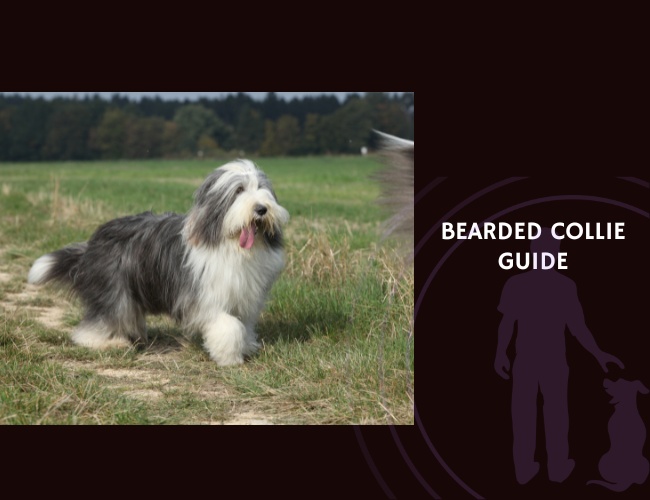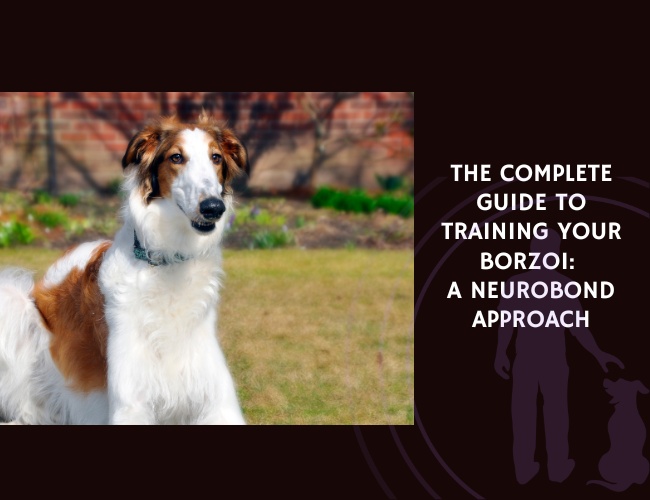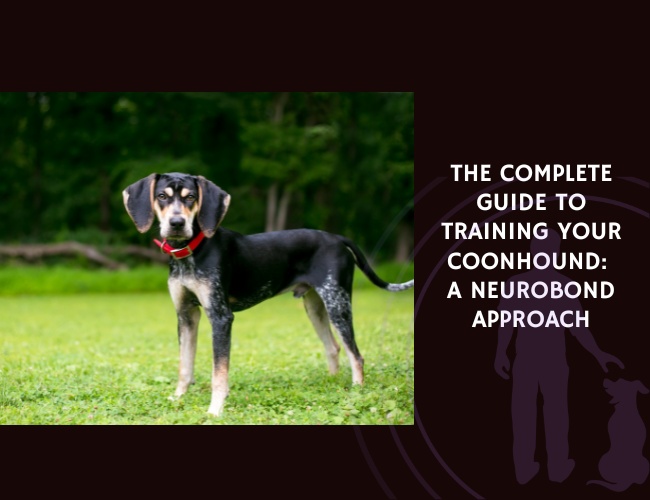Introduction: Meeting the Highland Herder
Picture a dog bounding through Scottish mist, their flowing coat catching the morning light as they expertly guide sheep across rugged terrain – this is the Bearded Collie in their element. These remarkable dogs, affectionately known as “Beardies,” represent centuries of careful breeding that produced one of Scotland’s most capable and charismatic herding breeds. Today, while many Beardies have traded hillsides for suburban backyards, they carry within them the same intelligence, energy, and independent spirit that made them indispensable partners to Scottish shepherds.
What makes the Bearded Collie truly special isn’t just their stunning appearance or their herding heritage – it’s their unique combination of work ethic and whimsy. These dogs possess a rare quality that experienced owners describe as “bounce,” both literal and figurative. They approach life with an enthusiasm that can transform ordinary moments into adventures, making them extraordinary companions for those who understand their needs.
As we explore the world of Bearded Collies together, you’ll discover why these dogs inspire such devotion in their families. From their complex herding instincts to their surprising emotional depth, from their substantial grooming needs to their remarkable longevity, every aspect of the Beardie tells a story of a breed that refuses to be ordinary. Let us guide you through understanding these magnificent dogs, helping you determine if you’re ready for the joyful chaos and unwavering loyalty that comes with sharing your life with a Bearded Collie.
Character & Behavior: The Heart of a Highland Worker
Understanding Your Beardie’s Herding Heritage
The Bearded Collie’s character springs directly from their Scottish working dog ancestry, where they served in three distinct herding roles that shaped their modern personality. As a “huntaway,” your Beardie’s ancestors would cast out across vast Highland areas, using their distinctive bark to locate and flush sheep from hidden spots among the heather. This heritage explains why your Beardie might vocalize more than other breeds – they’re literally bred to communicate across distances.
The triple heritage that shapes behavior: Your Bearded Collie inherits instincts from their roles as huntaway (finding and flushing), drover’s dog (moving cattle), and hill dog (gathering and returning sheep). This versatility translates into a modern dog who approaches problems from multiple angles, sometimes surprising you with their creative solutions. You might notice your Beardie using different strategies with different family members – gentle guidance with children, playful herding with other pets, and that distinctive “bounce and bark” when they really want to make a point.
Stock sense in everyday life: That innate “stock sense” – the ability to read and respond to livestock – manifests in remarkable ways in your home. Your Beardie might instinctively position themselves to keep track of all family members during walks, or gently nudge a wandering toddler back toward the group. This isn’t dominance; it’s centuries of breeding telling them to keep everyone safe and together. Understanding this helps you appreciate behaviors that might otherwise seem pushy or demanding.
The Social Butterfly with a Purpose
Bearded Collies demand inclusion in family life with an intensity that can catch first-time owners off guard. This isn’t a dog who’s content to watch from the sidelines – they need to be in the middle of everything, contributing their unique perspective to family dynamics.
Family integration patterns: Your Beardie views family activities as collaborative ventures where their input is essential. Whether you’re gardening, cooking, or helping kids with homework, expect your furry friend to position themselves strategically to “supervise” and participate. This sociable nature extends to their relationships with children, where Beardies often become tireless playmates, matching youngsters’ energy levels hour for hour. The bond they form with children is particularly special – they seem to recognize kindred spirits in their young human companions.
Inter-dog dynamics: With other dogs, Beardies can be “friendly to a fault,” as experienced owners often say. They approach canine relationships with an open-hearted enthusiasm that assumes everyone wants to be friends. This generally works well in multi-dog households, though you might need to protect your Beardie from their own trusting nature at dog parks, where not every dog appreciates their bouncy greeting style.
Emotional Intelligence and Sensitivity
The Bearded Collie’s emotional landscape is surprisingly complex, shaped by both genetics and their need for deep connection with their people. Understanding this emotional depth helps explain both their trainability and their occasional stubbornness.
Environmental awareness: Your Beardie processes environmental changes with remarkable sensitivity. A furniture rearrangement might require a thorough investigation, complete with cautious approaches and careful sniffing. This isn’t fearfulness – it’s the careful assessment of a dog bred to work independently in changing conditions. New people, sounds, or situations all get filtered through their sophisticated threat-assessment system, inherited from ancestors who had to distinguish between real dangers and false alarms while working alone on hillsides.
Protective instincts without aggression: While Beardies possess natural protective instincts, these manifest as awareness rather than aggression. Your Beardie might position themselves between you and a stranger, or alert you to unusual sounds, but they’re more likely to use their voice and presence than any form of confrontation. This makes them excellent watchdogs who alert without being guard dogs who confront.
The Independent Thinker’s Approach to Life
Perhaps no aspect of the Bearded Collie’s personality causes more surprise than their independent streak. These aren’t robots waiting for commands – they’re partners who consider your suggestions and sometimes offer alternatives.
Decision-making heritage: Remember, Beardies were developed to make decisions about livestock welfare when shepherds were miles away. This translates into a modern dog who might pause when you call them, clearly weighing whether your request makes sense in the current context. They’re not being defiant – they’re thinking. This cognitive style means you’ll have more success explaining why something matters rather than demanding blind obedience.
Problem-solving in action: Watch a Beardie encounter a puzzle toy or a training challenge, and you’ll see their problem-solving mind at work. They’ll try one approach, assess the results, then modify their strategy. This intelligence can manifest in unexpected ways – like figuring out how to open doors, “reorganizing” your garden to create more efficient pathways, or developing elaborate games with specific rules that they expect you to follow.
Training & Education: Guiding Your Intelligent Partner
The Learning Mind of a Beardie
Training a Bearded Collie requires understanding that you’re working with a dog who learns quickly but questions constantly. Their intelligence isn’t just about memorizing commands – it’s about understanding context, purpose, and occasionally offering their own improvements to your training plan.
Rapid acquisition with selective retention: Your Beardie can pick up new behaviors remarkably quickly when properly motivated. They might learn a new trick in just a few repetitions, impressing you with their intelligence. However, they also make conscious decisions about which behaviors are worth retaining. A command that seems arbitrary or pointless to them might mysteriously “disappear” from their repertoire, while behaviors that make sense in their worldview become permanent fixtures.
The distraction factor: Beardies process multiple stimuli simultaneously, a trait that served them well when monitoring scattered sheep while watching for predators. In training, this means your Beardie might be listening to you while also tracking a butterfly, noting the neighbor’s cat, and keeping tabs on interesting smells. Success comes from making yourself the most interesting thing in their environment, not from demanding they ignore everything else.

Early Socialization: Building Confidence
The critical socialization window for Bearded Collies cannot be overstated in its importance. Those first weeks and months shape how your Beardie will interpret the world for their entire life.
Strategic exposure planning: Socialization for a Beardie isn’t just about meeting people and dogs – it’s about experiencing different surfaces, sounds, and situations while feeling secure. Your young Beardie needs to encounter children playing, traffic sounds, different flooring textures, and various weather conditions. Each positive experience builds their confidence database, teaching them that new doesn’t mean dangerous.
The confidence continuum: You’ll notice your Beardie’s confidence isn’t uniform across all situations. They might be bold with other dogs but cautious around unfamiliar objects, or confident in familiar places but reserved in new environments. This is normal and reflects their thoughtful approach to the world. Building confidence means respecting their pace while gently encouraging exploration, never forcing interactions that overwhelm them.
Managing Natural Drives
Every Bearded Collie carries within them drives that once made them exceptional workers. In modern life, these drives need appropriate outlets to prevent frustration and problematic behaviors.
Herding instinct redirection: That instinct to gather and move might manifest as nipping at running children’s heels or attempting to herd joggers. Rather than suppressing these instincts, successful training redirects them. Treibball (herding large balls) provides an perfect outlet, allowing your Beardie to use their herding skills in a controlled, rewarding way. You might also notice them “herding” toys into piles or organizing their space – these are healthy expressions of their genetic programming.
Impulse control through engagement: The key to impulse control isn’t suppression but engagement. A Beardie who understands that patience leads to rewards becomes a willing partner in impulse control exercises. “Wait” at doorways, “leave it” with tempting items, and “steady” during exciting moments all become games rather than restrictions when taught with positive reinforcement and clear communication.
Canine Sports: Where Beardies Shine
The versatility that made Beardies excellent all-around farm dogs translates beautifully into modern canine sports. These activities provide both physical exercise and mental stimulation while strengthening your bond.
Agility as mental and physical exercise: Bearded Collies excel at agility, where their problem-solving abilities, athleticism, and enthusiasm converge. Watching a Beardie navigate an agility course reveals their heritage – they assess each obstacle, plan their approach, and execute with that characteristic bounce. The mental component of remembering sequences and adjusting speed provides the intellectual challenge they crave.
Obedience with a Beardie twist: In obedience trials, Beardies bring their own interpretation to exercises. They might heel with perfect precision while adding a little bounce to their step, or perform a recall with an extra flourish. Over half of Beardies with AKC trial titles are also show champions, demonstrating that this breed can excel in multiple arenas simultaneously. The key is embracing their personality within the structure of formal training.
Nutritional Recommendations: Fueling the Highland Athlete
Understanding Metabolic Demands
Your Bearded Collie’s nutritional needs reflect both their working heritage and their modern lifestyle. These dogs have higher metabolic demands than many breeds, burning calories efficiently even during seemingly casual activities.
Energy equation for active dogs: The Beardie’s metabolism runs hot, requiring careful attention to energy balance. Fats provide more than twice the energy of proteins or carbohydrates, making them crucial for maintaining your Beardie’s stamina. A diet with appropriate fat levels (typically 12-15% for adults, higher for working or very active dogs) supports their energy needs without promoting unhealthy weight gain. You’ll notice your Beardie’s energy levels directly correlate with nutrition quality – the right diet produces that characteristic Beardie bounce, while inadequate nutrition leads to lethargy.
Raw food considerations: Many Beardie owners report excellent results with raw food diets, noting improvements in coat quality, energy levels, and overall health. If you choose this route, ensure you’re providing balanced nutrition with appropriate calcium-phosphorus ratios, essential fatty acids, and micronutrients. The natural, whole-food approach aligns well with the Beardie’s robust digestive system, evolved to handle the varied diet of a working farm dog.
Supporting Joint and Coat Health
The Bearded Collie’s magnificent coat and active lifestyle require specific nutritional support to maintain optimal health throughout their life.
Omega fatty acid optimization: Your Beardie’s coat health depends heavily on omega-3 and omega-6 fatty acid balance. Fish oil supplementation, providing 20-55 mg of combined EPA and DHA per pound of body weight, supports not just coat luster but also joint health and cognitive function. You’ll see the difference in reduced shedding, decreased skin irritation, and improved mobility, especially important as your Beardie ages.
Joint support through nutrition: Given the breed’s activity level and potential for hip dysplasia, nutritional joint support becomes crucial. Glucosamine and chondroitin, whether through supplements or foods naturally rich in these compounds (like green-lipped mussels or bone broth), help maintain cartilage health. Starting joint support early, even in young adults, can help preserve mobility into the senior years.
Feeding Strategies and Metabolic Health
How you feed your Beardie matters as much as what you feed them. Their feeding patterns affect everything from energy stability to digestive health.
Meal frequency and timing: Adult Bearded Collies typically thrive on two meals daily, though some highly active individuals might benefit from three smaller meals. This feeding schedule maintains steady energy levels throughout the day, preventing the peaks and valleys that can affect both mood and performance. Puppies need more frequent feeding – three to four meals daily – to support their rapid growth and high energy expenditure.
The finicky eater paradox: Despite their high activity levels, many Beardies can be surprisingly finicky eaters. This selectiveness might stem from their intelligent, discriminating nature – they’re not just eating; they’re evaluating. Some Beardies prefer variety, getting bored with the same food daily, while others are creatures of habit who resist any change. Understanding your individual dog’s preferences while maintaining nutritional standards requires patience and creativity.
Bouncy. Bright. Unstoppable.
Heritage fuels their spirit. Centuries of Scottish herding work give the Bearded Collie both its tireless energy and independent problem-solving style. Understanding this working legacy turns their boundless enthusiasm into a purposeful partnership.
Sociability is their nature. Beardies thrive in the thick of family life, blending supervision with playfulness in every shared activity. Their open-hearted approach makes them beloved companions—but also calls for guidance to protect their trusting nature.



Intelligence demands engagement. Quick to learn yet keen to question, a Beardie responds best when training has clear purpose and mutual respect. Channelled wisely, their clever independence becomes a source of joy rather than frustration.
Health Concerns: Understanding Breed-Specific Vulnerabilities
Musculoskeletal Health
The Bearded Collie’s athletic build and active nature make musculoskeletal health a primary concern throughout their life. Understanding these vulnerabilities helps you make informed decisions about exercise, nutrition, and preventive care.
Hip dysplasia realities: With approximately 6% of Bearded Collies showing hip dysplasia on evaluation, this condition remains a concern but not an epidemic. The breed’s mean hip score of 9.7 provides a benchmark for breeding decisions. For your Beardie, this means maintaining appropriate weight, providing joint-supporting nutrition, and avoiding excessive high-impact exercise during the critical growth period (up to 18 months). Early signs might include reluctance to jump, bunny-hopping gait, or stiffness after rest.
Elbow considerations: While less common than hip issues, elbow dysplasia occurs frequently enough to warrant attention. You might notice front-end lameness, especially after exercise, or see your Beardie shifting weight off affected limbs. The good news is that many Beardies with mild elbow issues lead normal, active lives with appropriate management including weight control, modified exercise, and anti-inflammatory support when needed.
Autoimmune Challenges
Bearded Collies face a higher-than-average risk of autoimmune conditions, requiring vigilant monitoring and proactive health management.
Addison’s disease awareness: Affecting 2-3.4% of Beardies, hypoadrenocorticism (Addison’s disease) occurs when the adrenal glands don’t produce sufficient corticosteroids. The condition often presents subtly at first – your normally enthusiastic Beardie might seem slightly “off,” with intermittent digestive upset or unusual lethargy. These vague symptoms can make diagnosis challenging, but once identified and treated with hormone replacement, affected dogs can live completely normal lives.
Autoimmune spectrum disorders: The breed shows susceptibility to various autoimmune conditions including hypothyroidism, autoimmune hemolytic anemia, and pemphigus. Each presents differently, but they share a common thread – the immune system mistakenly attacking the body’s own tissues. Regular wellness checks, including complete blood counts and thyroid panels, help catch these conditions early when treatment is most effective.
Ophthalmic Health Monitoring
Your Beardie’s expressive eyes require attention to several potential inherited conditions that can affect vision.
Progressive retinal atrophy (PRA): This condition causes gradual vision loss as the retina’s rods and cones deteriorate. You might first notice night blindness – your Beardie becoming hesitant in dim light or bumping into things after dark. While there’s no cure, affected dogs adapt remarkably well to vision loss in familiar environments, relying on their other senses and your guidance.
Collie Eye Anomaly considerations: Though less common in Beardies than in some related breeds, the gene for Collie Eye Anomaly is present in the population. Regular eye examinations, especially for breeding dogs, help identify affected individuals and prevent passing on severe forms of this condition.
Understanding Longevity and Life Stages
With a median lifespan of 12.8-13.9 years, Bearded Collies enjoy relatively long lives for dogs of their size. Understanding how they age helps you provide appropriate care through each life stage.
The extended youth phenomenon: Beardies often maintain puppy-like behavior well into their senior years. You might find your 10-year-old Beardie still bouncing with enthusiasm, playing with the energy of a much younger dog. This extended youth is delightful but requires careful management – their spirit might write checks their aging bodies can’t cash. Adjusting exercise intensity while maintaining mental stimulation becomes crucial.
Geographic longevity differences: Interestingly, UK Beardies tend to live slightly longer (median 13.4 years) than their North American counterparts (median 12.0 years). This might reflect differences in breeding practices, lifestyle, or healthcare approaches. Understanding these statistics helps set realistic expectations while remembering that individual care quality significantly impacts longevity.
Attitude & Lifestyle: Living with a Beardie
Meeting Exercise and Stimulation Needs
Living successfully with a Bearded Collie means embracing an active lifestyle. These dogs don’t just enjoy exercise – they require it for physical and mental well-being.
The two-hour standard: Most adult Beardies need 1-2 hours of exercise daily, but this isn’t just about duration – it’s about quality and variety. A two-hour leashed walk provides less satisfaction than a 45-minute session combining off-leash running, training exercises, and interactive play. Your Beardie’s exercise needs aren’t just physical; they’re looking for engagement, challenge, and purpose in their activities.
Mental stimulation equivalence: Here’s something crucial to understand: mental stimulation can tire your Beardie as effectively as physical exercise, sometimes more so. A 20-minute training session working on new tricks, a puzzle toy challenge, or a scent-work game engages their problem-solving heritage. You’ll notice that after intense mental work, your Beardie shows the same satisfied exhaustion as after a long hike.
Adapting to Your Living Environment
Bearded Collies are surprisingly adaptable to various living situations, provided their core needs are met. Understanding how to optimize your environment for a Beardie helps everyone thrive.
Space utilization strategies: While Beardies appreciate yards, what matters more is how space is used. A small yard with agility equipment, toys, and interaction opportunities serves a Beardie better than a large, empty field. Indoor space matters too – Beardies need room to play and bounce without destroying your belongings. Creating “Beardie zones” with appropriate flooring and minimal breakables lets them express their exuberant nature safely.
Apartment living realities: Yes, Beardies can thrive in apartments, but success requires commitment. You’ll need to compensate for limited space with increased outdoor adventures, more structured exercise, and creative indoor activities. Many apartment-dwelling Beardies become neighborhood celebrities, known for their friendly greetings and distinctive appearance during their multiple daily outings.
Climate Considerations
Your Beardie’s magnificent double coat evolved for Scottish weather – cool, damp, and variable. Understanding how this affects their comfort in different climates helps you make appropriate adjustments.
Cold weather performance: In cold climates, Beardies truly shine. That double coat provides remarkable insulation, allowing them to play in snow for extended periods. You might notice your Beardie becoming more energetic as temperatures drop, exhibiting the vigor their ancestors needed for winter work. Ice balls forming in their leg furnishings might be the only limitation to their cold-weather adventures.
Hot weather management: In warm climates, Beardies require thoughtful management. Their coat actually provides some insulation against heat, so never shave a Beardie thinking it will cool them. Instead, provide early morning and evening exercise, ensure constant water access, and create cool retreats. Many Beardies enjoy kiddie pools or sprinklers, turning heat management into play opportunities.

Family Integration Dynamics
The Bearded Collie’s approach to family life is total immersion. They don’t just live with you; they become integral family members with opinions about everything.
Child-Beardie relationships: The bond between Beardies and children is special but requires supervision and guidance. Your Beardie will likely adore your children, but their herding instincts might emerge as nipping at running kids or trying to keep them contained in one area. Teaching children to interact appropriately – no chasing games that trigger herding, respectful handling of that gorgeous coat – creates harmonious relationships. Many Beardies become devoted guardians, sleeping outside children’s doors and accompanying them everywhere.
Multi-pet households: Beardies generally excel in multi-pet situations, accepting cats, small dogs, and even smaller pets as pack members. Their herding instinct might initially manifest as attempts to organize other pets, but this usually settles into peaceful coexistence. You might find your Beardie “collecting” all pets into one room, satisfied once everyone is accounted for.
Grooming & Maintenance: The Beautiful Challenge
Understanding the Coat Commitment
Let’s be honest about what Beardie ownership truly entails: you’re committing to becoming an amateur (or professional-level) groomer. That magnificent coat requires dedication, skill, and the right attitude.
Daily brushing realities: The “10-15 minutes daily” often quoted is a minimum for a well-maintained coat. In reality, you’ll spend 20-30 minutes on thorough brushing sessions, especially during coat changes or after outdoor adventures. This isn’t just about appearance – matting can cause skin problems and discomfort. Your brushing technique matters too: always mist the coat with conditioning spray to prevent breakage, work in sections, and brush down to the skin.
The coat change phenomenon: Around 12-18 months, your Beardie will “blow” their puppy coat, a process that can last weeks and test your commitment. During this time, daily brushing might not be enough – some owners brush twice daily to prevent matting. This is temporary but intense, and how you handle it sets the stage for future grooming success.
Professional Grooming Partnerships
While many Beardie owners become proficient home groomers, professional grooming remains valuable for most families.
Finding a Beardie-savvy groomer: Not all groomers understand Beardie coats. You need someone who knows to never shave unless medically necessary, understands proper dematting techniques, and appreciates that the casual, natural look is the goal – not a sculpted show coat unless you’re showing. Interview potential groomers, ask about their Beardie experience, and don’t hesitate to provide specific instructions.
The grooming schedule balance: Most pet Beardies benefit from professional grooming every 6-8 weeks, with home maintenance between visits. This schedule keeps the coat manageable while ensuring professional attention to areas you might miss. Some owners alternate between full grooms and “tidy-up” appointments, managing costs while maintaining coat health.
Senior Years: Aging with Grace and Bounce
Maintaining Quality of Life
As your Beardie enters their golden years (typically around 8-10 years), their needs shift while their spirit often remains remarkably youthful.
Exercise adaptation strategies: Your senior Beardie might still want to chase balls for hours, but their body needs gentler activities. Swimming provides excellent low-impact exercise, maintaining muscle tone without stressing joints. Shorter, more frequent walks replace long hikes, and mental stimulation becomes even more important as physical capabilities decline. Many senior Beardies discover new interests – becoming therapy dogs, learning tricks, or developing elaborate games with grandchildren.
Cognitive health support: Beardies often maintain mental sharpness well into old age, but cognitive support becomes important. Omega-3 supplementation, continued training and mental challenges, and maintaining social interactions all support brain health. You might notice your senior Beardie developing new quirks or deepening existing personality traits – embrace these changes as part of their continued evolution.
Health Monitoring Intensification
Senior Beardies require more vigilant health monitoring to catch age-related issues early.
Bi-annual check-ups: Switching from annual to bi-annual veterinary visits helps catch developing issues when intervention is most effective. Blood work becomes particularly important, monitoring organ function and catching metabolic changes early. Your observations matter too – subtle changes in appetite, energy, or behavior often signal developing health issues.
Pain management awareness: Beardies are stoic dogs who might hide discomfort until it becomes severe. Watch for subtle signs: hesitation before jumping, stiffness after rest, or decreased interest in activities they once loved. Modern pain management options, from NSAIDs to alternative therapies like acupuncture, can dramatically improve quality of life for senior Beardies with arthritis or other painful conditions.
Conclusion: Is a Bearded Collie Right for You?
After exploring the depth and complexity of Bearded Collie ownership, you might feel both excited and overwhelmed – and that’s exactly the right response. These aren’t dogs for everyone, and understanding that is the first step toward making an informed decision.
The ideal Beardie family embraces activity as a lifestyle, not an obligation. You don’t need to be marathon runners, but you should genuinely enjoy being active outdoors in various weather conditions. You view grooming not as a chore but as bonding time, an opportunity to connect with your dog while maintaining their health and appearance. You appreciate intelligence in a dog, even when it means being outsmarted occasionally, and you have the patience to work with a partner rather than command a servant.
The commitment reality extends beyond the 12-14 year lifespan to daily involvement in your Beardie’s life. These dogs don’t thrive with minimal interaction – they need engagement, purpose, and inclusion. The financial commitment includes not just purchase price and routine care, but potentially significant grooming costs, training classes, and health management for breed-specific conditions. The time commitment encompasses exercise, grooming, training, and simply being present for a dog who needs deep connection with their people.
The rewards of Beardie ownership are as substantial as the challenges. You’ll gain a devoted companion whose enthusiasm for life is contagious, whose antics will make you laugh daily, and whose loyalty runs soul-deep. You’ll discover capabilities in yourself you didn’t know existed – becoming a proficient groomer, a creative trainer, and an active outdoor enthusiast. You’ll join a community of Beardie owners who understand both the challenges and joys of living with these remarkable dogs.
Your Bearded Collie will transform your life in ways you can’t anticipate. They’ll teach you patience when they question your decisions, make you laugh with their bouncing enthusiasm, and touch your heart with their deep emotional connections. They’ll frustrate you with their independence, exhaust you with their energy, and occasionally overwhelm you with their grooming needs. But if you’re the right match for a Beardie, you’ll find these challenges pale compared to the joy of sharing your life with one of these magnificent Highland spirits.
The question isn’t whether Bearded Collies are wonderful dogs – they absolutely are. The question is whether you’re ready for their particular brand of wonderful. If you’ve read this guide and felt your excitement growing rather than diminishing, if the challenges seem like adventures rather than obstacles, then perhaps you’re ready to welcome a Beardie into your life. Just remember: once a Beardie owner, always a Beardie owner. These dogs don’t just join your family; they transform it, leaving pawprints on your heart that last a lifetime. 🐾










